Shinnai Joruri and Hachioji Kuruma Ningyo in Singapore
~Beauty of Japanese Traditional Performing Arts~
Registration for 23rd November is closed due to overwhelming response. Thank you for the support!
Japan Creative Centre (JCC) and the Japanese Cultural Society, Singapore (JCS) are pleased to present a performance of the Japanese traditional arts of Shinnai Joruri and Hachioji Kuruma Ningyo led by Mr. Tsuruga Wakasanojo XI (headmaster of the Tsuruga School of Shinnai Narrative Song) and Mr. Nishikawa Koryu V (headmaster of the Hachioji Kuruma Ningyo puppet troupe).
In addition, we are also pleased to present Hayashi (traditional musical accompaniment) by Mr. Mochizuki Bokusei, and Nihon Buyo by Ms. Hanayagi Kihi (Japanese traditional dancer of Hanayagi Ryu), in order to show the beauty of these Japanese traditional performing arts.
This project commemorates the third anniversary of JCC.
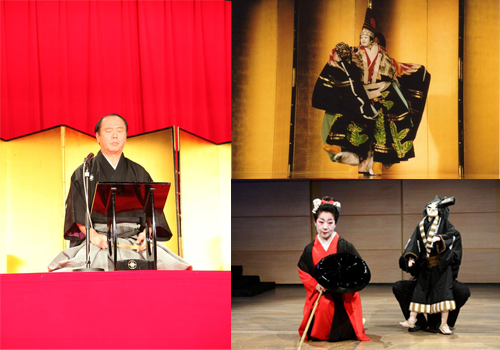
SUMMARY OF EVENTS:
DATE:
Thursday, 22nd November 2012
Friday, 23rd November 2012
TIME:
7pm (Registration starts from 6:30pm)
VENUE:
The Japanese Association, Singapore
Auditorium
120 Adam Road, Singapore 289899
*Check out the access map for direction.
NOTICE: JAS has no car parking space for non JAS members’ vehicles and there is also no proper car parking spaces near the Association's premises, so please use public transportation.
ADMISSION: FREE (First Come, First Served basis)
REGISTRATION FOR PERFORMANCE: Click HERE to register (RSVP by 16th November).
About Shinnai
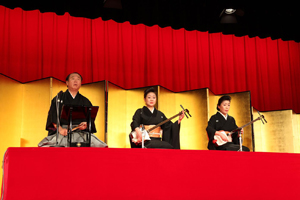
Shinnai is a style of narrative singing (joruri) that traces its origin to the early 1700s. The first Tsuruga Wakasanojo began composing and performing narrative songs in the 1770s. His style of music became widely popular through the exceptionally passionate performances of his apprentice Tsuruga Shinnai, whose name later became synonymous with the genre. The intensely emotional and often tragic stories of the Shinnai repertoire captured the popular urban lifestyle of the capital city of Edo (present-day Tokyo) and the culture of the vibrant pleasure quarters.
About Hachioji Kuruma Ningyo
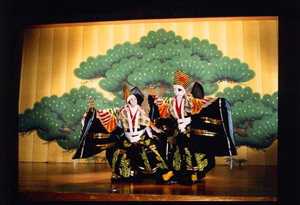
Hachioji Kuruma Ningyo is a form of puppet theatre created by the first Koryu Nishikawa around the end of the Edo period (late 19th century). It is called "Kuruma Ningyo" because the puppeteer sits on a small seat with roller wheels (rokuro kuruma) when operating the puppet (ningyo). This small seat, and the fact that only one person is needed to operate each puppet, distinguishes Kuruma Ningyo from Bunraku, in which three people are needed to operate each puppet. This one-to-one relationship allows great flexibility and realism as the puppet and the puppeteer move in unison. With these advantages, the Kuruma Ningyo troupe of Nishikawa Koryu has been active in collaboration with other performance genres.
About Hayashi
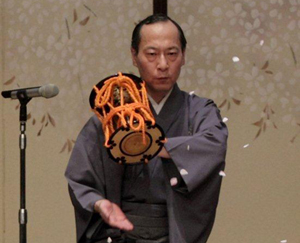
Hayashi is a form of musical accompaniment or a group of performers who provide musical accompaniment for Japanese Noh or Kabuki theatre, creating a special atmosphere during the performance. In the many styles of Hayashi, such as Nogaku Bayashi (Noh music), Kabuki Bayashi (Kabuki music), and Matsuri Bayashi (festival music), various kind of musical instruments are used such as the fue (Japanese flute), kotsuzumi (shoulder drum), taiko (drum hit with drumsticks), and otsuzumi (big drum).
In this performance, kotsuzumi and yokobue (transverse flute) will be played. Kotsuzumi are made of horsehide and cherry wood, and are played by beating the drum by hand, accompanied by the voice of the performer. Depending on how the drum is beaten, and how the player's left hand is used, not only rhythm, but also various kinds of tones can be created. Yokobue are made of bamboo. Changes in how the performer breathes, blows, and covers the finger holes result in a rich and delicate sound.
About Nihon Buyo
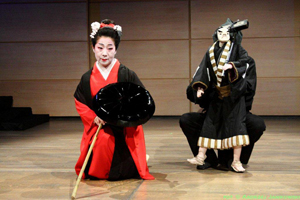
Since ancient times, there has been a wide variety of genres of Japanese dance.
Today, there are two main divisions of dance in Japan namely, Bon Odori and folk entertainment which are religious dances relating to ordinary people’s lives and Nihon Buyo which is a more disciplined and sophisticated performing art performed on stage in full make up and costume, showcasing classical works and creative contemporary cultural dances.
Nihon Buyo evolved from the theatrical performing art of KABUKI (classified as a UNESCO Intangible Cultural Heritage) which began in the early 17th Century encompassing dance, music and drama. Nihon Buyo extracted from the dance portion of Kabuki has been handed down for generations and has flourished over the centuries together with Kabuki. The beautiful style of Nihon Buyo is based mainly on the culture and lifestyle of the Japanese people.
Profiles of the main performers
Tsuruga Wakasanojo XI (Headmaster, Tsuruga School of Shinnai Narrative Song) |
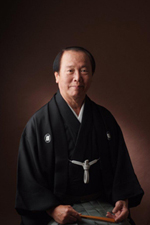 |
Born in Kagurazaka, Tokyo, Tsuruga Wakasanojo XI studied shinnai-style musical storytelling with his father, Tsuruga Isetayu. He received his first stage name, Isejitayu, in 1958; succeeded to his father’s name, Isetayu, in 1973; and in 2000, became the 11th holder of the name Tsuruga Wakasanojo, the premier professional name in the shinnai world. As president of the Shinnai Association of Japan, he is active in educational and promotional activities for the preservation and future vitality of the shinnai art form.
Through innovative collaborations with Kuruma Ningyo puppetry, Noh, and dance, he has tirelessly pursued his goal of further making shinnai enjoyable to the eyes as well as the ears. He has performed overseas in more than thirty countries in North and South America, Europe, and Asia. In 2001, the Japanese Ministry of Culture designated him a Living National Treasure. In 2002, he was designated an Honorary Citizen of Shinjuku City, Tokyo, and in 2009, as Special Adviser for Cultural Exchange for Fiscal 2009 by the Agency for Cultural Affairs, Japan. In 2009, the Emperor awarded him the Order of the Rising Sun for his contributions to traditional Japanese culture. |
Nishikawa Koryu V (Headmaster, Hachioji Kuruma Ningyo) |
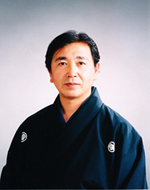 |
Nishikawa Koryu V is the headmaster of the traditional puppetry troupe, Hachioji Kuruma Ningyo, which has a history of over 160 years. The troupe has been designated as a National Intangible Folk Custom Cultural Asset. He studied puppetry from his childhood under his grandfather (the third generation headmaster) and father (fourth generation), and later studied three-puppeteer Bunraku puppetry at the National Theatre Bunraku Study Center.
In addition to frequent performances in Hachioji, he performs throughout Japan. He also engages in activities to preserve traditional puppetry in Japan by instructing many puppeteers and, since 1995, organizing events entitled “Passing Traditional Puppetry to Next Generation”.
The Hachioji Kuruma Ningyo troupe has been well received overseas. In 1987, Nishikawa Koryu V taught Kuruma Ningyo at the Marionette Theatre Institute in Sweden. For their performance in South America (Brazil, Chili, and Uruguay) organized by the Japan Foundation in 2000, they received the Florencio Award for Best Foreign Play in the International Festival of Theater in Uruguay. In 2004, Nishikawa Koryu V was named by Hachioji City as a Cultural Ambassador, and in 2006, he received an award from the city for cultural merit. |
Mochizuki Bokusei V (Hogaku Hayashi Performer) |
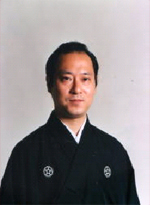 |
Mochizuki Bokusei V has been studying Nogaku hayashi (otsuzumi, taiko), Edo matsuri hayashi, nagauta shamisen and other related performing arts since he was young. In his teens, he joined the Music Theatre Department of Onoe Kikugoro, after which he started studying Kabuki music. Since then, he has composed many works for the Kabuki theatre. One of his most important compositions is “Shochiku Grand Kabuki, Twelfth Night,” which was directed by Ninagawa Yukio. |
Hanayagi Kihi (Nihon Buyo Hanayagi School Dancer) |
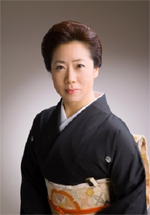 |
Hanayagi Kihi is a master of Nihon Buyo under the Hanayagi School. The founder of the Hayanagi Kihi Nihon Buyo Studio, she has been studying Nihon Buyo (Japanese traditional dance) since the age of 3. She graduated from the Nihon Buyo course in the Department of Theatre, Nihon University College of Art. In addition to teaching private students, she teaches dance at a senior high school and has been appointed as a member of the Advisory Committee on Social Education, Hachioji City. She promotes Nihon Buyo in various other ways besides education. In addition to teaching and performing traditional Nihon Buyo, she is active in contemporary dance.
She received an Honorary Award from the Ministry of Education, won first prize in the Tokyo Newspaper Organization Inter-Country Nihon Buyo Competition, and won the Metropolis Award. She received a Leadership Excellence Award in the teaching of Nihon Buyo, etc. |
| Organizer: |
Sponsor: |
Support: |
 |
 |
 |
 |
 |
Please register early to avoid disappointment. We regret to inform that as there are limited seating, seats will be confirmed only upon receipt of confirmation email from JCC. ALL EVENTS ARE FREE OF CHARGE.
|














